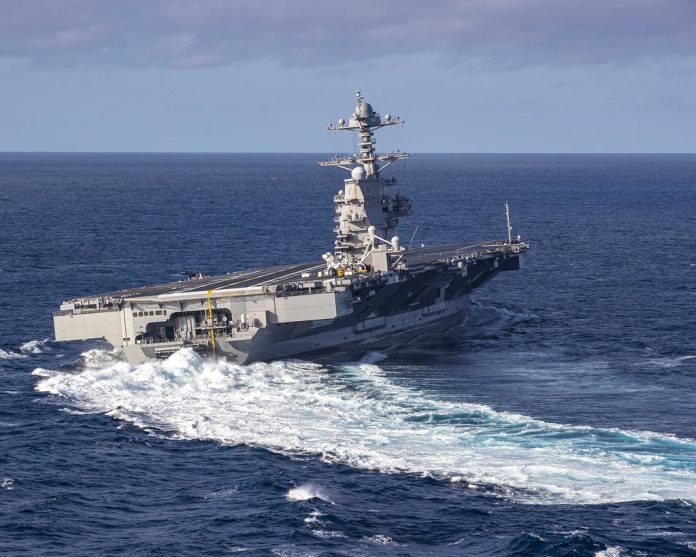
The U.S. Navy’s sprawling array of aircraft carriers, a testament to American military prowess, has hit a wall of reality. The fleet, while impressive, is thinly stretched.

Maintenance and modernization have shackled several carriers to the docks, and the ambitious Gerald R. Ford-class carriers are a marvel shadowed by the long construction times and towering costs.

Recruitment woes and supply chain snags only compound the challenges, painting a picture of a Navy at a strategic crossroads.

At the heart of the issue is the enduring question: Are there enough aircraft carriers? The answer, although nuanced, points to a fleet spread perilously thin.

With the USS Dwight D. Eisenhower engaging Houthi rebels in Yemen and the USS Gerald R. Ford’s Mediterranean deployment extended twice, only a handful of carriers can respond to Indo-Pacific tensions.

SAN DIEGO (July 29, 2009) The aircraft carrier USS Nimitz (CVN 68) and embarked Carrier Air Wing (CVW) 11 transits into San Diego prior to mooring at Naval Air Station North Island. Nimitz is preparing for a 2009 regularly scheduled Western Pacific Deployment. (U.S. Navy photo by Mass Communication Specialist 3rd Class John Philip Wagner Jr./Released)
The USS Nimitz visits South Korea, and USS Ronald Reagan, stationed in Japan, anticipates replacement by USS George Washington later this year after a prolonged overhaul.

The USS John C. Stennis is next in line for a Refueling and Complex Overhaul (RCOH), further stressing availability.

Building more carriers is not a simple solution. The eye-watering average cost of a supercarrier, upwards of $13.3 billion, paired with ongoing maintenance costs in the hundreds of millions, makes them both a financial burden and a high-value target in wartime.

The United States can ill afford the loss of such an asset, nor the dented power projection that would ensue.

Complicating matters further is the struggle to meet recruiting quotas, rendering the possibility of manning additional supercarriers doubtful.

The current state of affairs is such that the U.S. Navy can barely sustain the carriers it has. As the Aircraft Carrier Industrial Base Coalition (ACIBC) outlines, the industry grapples with surging costs due to inflation, material availability challenges, and significant delays in construction and delivery.

Workforce issues exacerbate the situation, with firms struggling to hire, train, and retain skilled labor, impacting their ability to fulfill contracts.

The key point is clear: the future Ford-class carriers are currently lagging behind schedule, but it is hoped they won’t exceed the budget like the first ship of the class.

The Navy is also reducing its mid-to-long-term projects to concentrate on the immediate future.

This will require relying on the carriers it currently possesses while hoping there are no multiple crises and that no carrier is suddenly lost due to unforeseen circumstances.
Relevant articles:
– The U.S. Navy’s Real Aircraft Carrier Nightmare Has No Easy Solution, The National Interest
– The Navy’s Aircraft Carrier Nightmare Is Very Real and Unsolvable, The National Interest
– Carrier Woes: The Navy’s fighters can’t reach China, Sandboxx
– The inside story of how the Navy spent billions on the “little crappy ship”, GovExec.com

